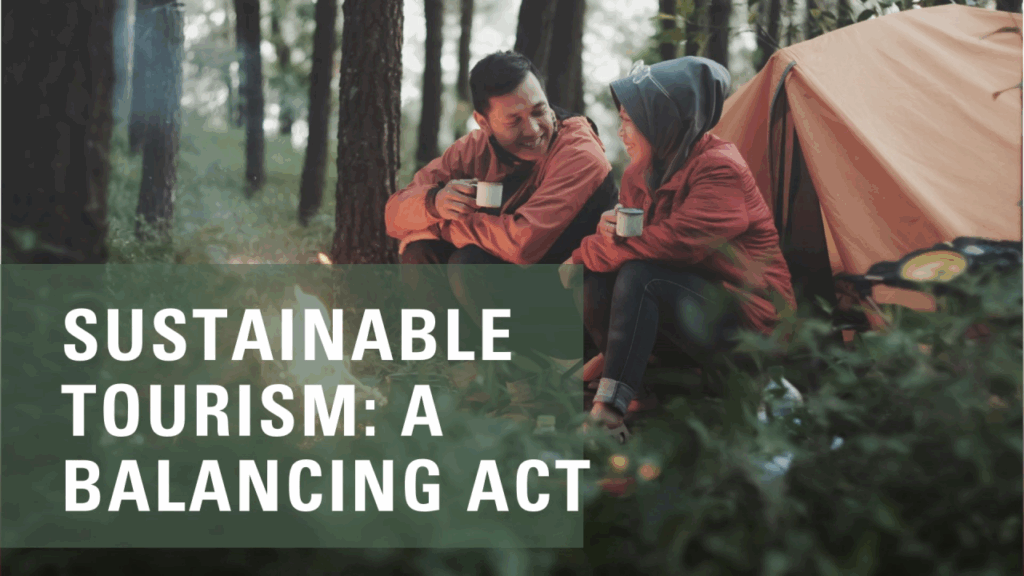
Tourism is one of the fastest-growing industries globally, contributing significantly to local economies. However, conventional tourism often comes with a price: environmental degradation, overuse of natural resources, and damage to ecosystems. Eco-tourism, on the other hand, offers a more sustainable way to travel, allowing people to explore the world while minimizing harm and even contributing to environmental protection.
This article dives into how eco-tourism works, why it matters, and how travelers can balance adventure with responsibility.
What is Eco-Tourism?
Eco-tourism is a responsible travel approach that focuses on conserving natural environments, supporting local communities, and promoting cultural awareness. Unlike mass tourism, which emphasizes convenience and luxury, eco-tourism seeks to balance enjoyment with sustainability.
Core principles include:
- Minimizing environmental impact.
- Supporting conservation initiatives.
- Respecting local cultures and traditions.
- Providing economic benefits to host communities.
Why Eco-Tourism Matters
- Protecting Biodiversity
Eco-tourism activities often take place in sensitive ecosystems like forests, wetlands, or coral reefs. Properly managed tours help preserve these habitats. - Reducing Carbon Footprint
By promoting low-impact transport and accommodations, eco-tourism reduces emissions linked to traditional tourism. - Empowering Local Communities
Eco-tourism creates jobs in guiding, hospitality, and handicrafts, ensuring locals directly benefit. - Educating Travelers
Visitors gain awareness about sustainability, water conservation, and climate action through immersive experiences.
Best Practices in Eco-Tourism
- Eco-Friendly Accommodations
Choose lodges or hotels that use renewable energy, recycle water, and manage waste sustainably. - Low-Impact Activities
Hiking, bird-watching, or kayaking cause far less disruption than motorized tours or cruises. - Respect Local Culture
Support community-led initiatives, attend cultural programs, and purchase local crafts instead of mass-produced souvenirs. - Waste Reduction
Travelers should carry reusable water bottles, avoid plastic, and follow “leave no trace” principles. - Wildlife Protection
Avoid disturbing animals, feeding them, or supporting attractions that exploit wildlife.
Examples of Eco-Tourism in Action
- Costa Rica: Famous for its eco-lodges and rainforest preservation projects.
- Kenya: Community-led safari programs protect wildlife while funding education.
- Iceland: Geothermal energy powers eco-friendly accommodations and tours.
- Bhutan: Caps visitor numbers to avoid overtourism, ensuring minimal ecological footprint.
Benefits of Eco-Tourism
- Environmental: Protects ecosystems, reduces pollution, and promotes conservation.
- Economic: Provides sustainable livelihoods for local communities.
- Cultural: Preserves indigenous traditions and fosters global awareness.
- Personal: Gives travelers meaningful, authentic experiences while contributing positively.
Table: Eco-Tourism vs. Conventional Tourism
| Aspect | Eco-Tourism | Conventional Tourism |
|---|---|---|
| Environmental Impact | Low, prioritizes conservation | High, often causes pollution |
| Community Involvement | Directly benefits locals | Benefits mostly large corporations |
| Resource Use | Promotes renewable and sustainable methods | High consumption, often wasteful |
| Cultural Impact | Respects and uplifts traditions | Risk of cultural exploitation |
| Traveler Experience | Educational and immersive | Entertainment-focused |
Overview Table
| Eco-Tourism Practice | Environmental Benefit | Community Benefit |
|---|---|---|
| Staying in eco-lodges | Saves energy & water | Creates green jobs |
| Wildlife safaris (ethical) | Protects species & habitats | Funds conservation projects |
| Local food experiences | Reduces carbon footprint | Supports local farmers |
| Hiking & cycling tours | Cuts emissions | Boosts local guiding economy |
| Cultural exchange | Preserves traditions | Promotes fair income |
| Plastic-free travel | Reduces waste in nature | Lowers clean-up costs |
Challenges of Eco-Tourism
- Greenwashing: Some companies market themselves as eco-friendly without genuine practices.
- Overtourism Risks: Even eco-tourism can harm if visitor numbers aren’t regulated.
- Higher Costs: Sustainable accommodations may be more expensive than conventional options.
- Education Gap: Travelers need awareness of what true eco-tourism entails.
Final Thoughts
Eco-tourism proves that travel and conservation can go hand-in-hand. By making responsible choices, travelers can enjoy breathtaking landscapes and vibrant cultures while ensuring they remain intact for future generations. From eco-lodges in Costa Rica to community-led safaris in Africa, eco-tourism shows us a path where exploration doesn’t mean exploitation.
FAQs
Q1: How is eco-tourism different from regular tourism?
Eco-tourism prioritizes sustainability, conservation, and community benefits, unlike conventional tourism.
Q2: Can eco-tourism really help protect the environment?
Yes, eco-tourism funds conservation projects and reduces the ecological footprint of travel.
Q3: Is eco-tourism more expensive?
Sometimes, but the long-term benefits for communities and ecosystems make it worth the investment.

